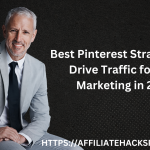In the vast, wild world of online business, one golden rule stands tall: Not all subscribers are created equal. Imagine you’re throwing a party. Would you send the same invitation to your college buddies, your book club friends, and your 90-year-old grandma? Probably not! Just like you wouldn’t offer Granny a keg stand (we hope), you shouldn’t treat all your email subscribers the same way. This is where the magic of list segmentation comes into play—think of it as the fine art of matchmaking between your content and your audience. Get it right, and you’re not just throwing a party; you’re hosting the event of the century.
List segmentation isn’t just a fancy term marketers throw around to sound smart. It’s a powerful tool that can skyrocket your online earnings by ensuring the right people receive the right messages at the right time. By slicing and dicing your email list based on demographics, behaviors, and preferences, you can create personalized experiences that make subscribers feel like VIPs. And when they feel special, they’re more likely to click, engage, and, most importantly, buy. So, buckle up and get ready to dive into the wonderful world of list segmentation—a small tweak with big payoffs that might just make you the life of the (marketing) party.
Unlock the Proven Path to $100-$300 Daily – Watch This FREE Video and Start Now >>>

Understanding List Segmentation
What exactly is list segmentation? Imagine you’re a chef with a very diverse crowd coming to your restaurant. You wouldn’t serve a spicy curry to someone who can’t handle heat, right? Similarly, in the marketing world, list segmentation is like being that savvy chef who knows exactly what each customer wants to devour. It’s the process of dividing your email subscribers into smaller groups based on specific criteria so you can tailor your messages to their unique tastes. It’s like playing Cupid but for emails—matching the right content with the right audience.
Why bother with list segmentation, you ask? Well, it’s simple. When you send out generic emails to everyone on your list, it’s like throwing spaghetti at the wall and hoping something sticks. Spoiler alert: It often doesn’t. But with list segmentation, you can slice and dice your audience based on demographics, past behaviors, preferences, and more. This way, each email you send is a perfectly crafted dish, served to those who’ll savor every bite. The result? Higher open rates, increased engagement, and a noticeable boost in your conversion rates. Plus, your subscribers will appreciate the personal touch and won’t see you as just another spammer cluttering their inbox.
So, if you’re still sending one-size-fits-all emails, it’s time to stop. Start thinking like a master chef (or a savvy party planner) and get to know your subscribers. Because when you understand and implement list segmentation, you’re not just sending emails—you’re creating experiences that resonate, engage, and convert. And who wouldn’t want to be known as the marketing maestro who knows exactly what their audience craves?
Identifying Your Target Audience
Let’s face it: trying to sell to everyone is like trying to be everyone’s best friend—exhausting and, frankly, impossible. Identifying your target audience is crucial for effective list segmentation and, ultimately, for making more money online. Think of it as your marketing compass, guiding you through the stormy seas of digital marketing toward the treasure trove of engaged and loyal subscribers. But how do you find this elusive target audience? Time to put on your detective hat and start investigating!
First up, analyze your current subscribers. Who are these people? Dive into the demographics: age, gender, location, income level—it’s like reading your subscribers’ profiles on a dating app. Next, delve into their behavior patterns. Are they serial clickers who open every email, or are they more like digital wallflowers who need a little coaxing? Check out their purchase history and engagement metrics. This data is your goldmine; it tells you not just who your subscribers are, but how they behave. And trust us, when it comes to marketing, actions speak louder than words.
Unlock the Proven Path to $100-$300 Daily – Watch This FREE Video and Start Now >>>
By truly understanding your target audience, you can segment your email list with laser precision. No more guessing games or playing marketing roulette. You’ll be able to deliver the right content to the right people at the right time. And when you hit that sweet spot, your subscribers won’t just open your emails—they’ll eagerly anticipate them, click through, and ultimately, become loyal customers. So, start digging deep and uncover the secrets of your audience. Your email campaigns (and your bottom line) will thank you.
Effective Segmentation Strategies
So, you’ve got your target audience down pat—awesome! Now comes the fun part: slicing and dicing your email list with effective segmentation strategies. Think of this as your culinary adventure, where you’re crafting the perfect dish for every palate. Ready to become a segmentation sous-chef? Let’s get cooking!
Demographic Segmentation
First up, we have demographic segmentation. This is your basic meat-and-potatoes strategy, focusing on straightforward criteria like age, gender, income, and education level. It’s like knowing who prefers a burger over a fancy filet mignon. By understanding these basic demographics, you can tailor your messages to match the interests and needs of different segments. For instance, promoting a high-end product to high-income subscribers while offering budget-friendly options to those on a tighter budget. It’s simple but effective, like grandma’s secret cookie recipe.
Psychographic Segmentation
Now, let’s spice things up with psychographic segmentation. This strategy digs into the “why” behind your subscribers’ actions. It’s about understanding their personalities, values, interests, and lifestyles. Imagine you’re a mixologist crafting the perfect cocktail for each customer’s unique taste. By gathering psychographic data, perhaps through surveys or social media insights, you can create content that aligns with their core beliefs and passions. For example, promoting eco-friendly products to the environmentally conscious or fitness gear to the health nuts. It’s a bit more complex, but oh-so-rewarding, like nailing that perfect blend of flavors in a signature dish.
By combining these segmentation strategies, you can create a marketing masterpiece. Demographic, behavioral, and psychographic segmentation each play a crucial role in understanding and engaging your audience. Mix and match these strategies to craft emails that are as irresistible as a chef’s special. And remember, the more personalized your messages, the more likely your subscribers will feel like VIP guests at your marketing feast. So, sharpen those knives (figuratively, of course), and get ready to whip up some segmented email magic that will have your subscribers coming back for seconds.
Tools and Techniques for List Segmentation
Chef extraordinaire, you’ve got your target audience and your segmentation strategies all prepped. Now, let’s talk about the kitchen gadgets and secret sauces that will make your list segmentation as smooth as a perfectly whipped meringue. With the right tools and techniques, you’ll be able to slice, dice, and serve up personalized content like a pro.
Email Marketing Platforms
First things first: you need a solid email marketing platform. Think of this as your trusty sous-chef, helping you manage and execute your segmentation strategies without breaking a sweat. Platforms like Mailchimp, ActiveCampaign, and ConvertKit are packed with features designed to make segmentation a breeze. They offer user-friendly interfaces and robust analytics, allowing you to create segments based on a wide range of criteria—from basic demographics to complex behavioral patterns. It’s like having a kitchen assistant who not only chops your veggies but also helps you plate the dish with flair.
Automation and AI in Segmentation
Ready to take your segmentation game to the next level? Enter automation and AI—your high-tech kitchen gadgets that make everything easier and more efficient. Automation tools can help you set up workflows that automatically segment subscribers based on their actions. For example, if a subscriber clicks on a link about vegan recipes, they can be automatically added to your “vegan enthusiasts” segment. AI tools, on the other hand, can analyze large sets of data to identify patterns and suggest optimal segmentation strategies. It’s like having a robot chef who knows exactly how to tweak the recipe for perfection.
Unlock the Proven Path to $100-$300 Daily – Watch This FREE Video and Start Now >>>
With these tools and techniques, you’re well-equipped to master the art of list segmentation. Whether you’re using email marketing platforms to manage your lists, collecting data through surveys, tracking user behavior with analytics, or leveraging automation and AI, each tool adds a layer of finesse to your marketing efforts. So, gear up and get ready to transform your email campaigns from bland to grand, making each subscriber feel like they’re at a five-star feast tailored just for them.
Measuring Success and Optimization
You’ve crafted your segmented email campaigns with the precision of a Michelin-star chef. But how do you know if your culinary creations are a hit or a miss? Enter the crucial final step: measuring success and optimization. It’s like tasting your dish and adding that final pinch of salt to make it perfect. Let’s dive into how you can ensure your efforts are yielding delicious results.
Key Performance Indicators (KPIs) for Segmentation
First, let’s talk KPIs, the secret ingredients that tell you if your segmentation recipe is on point. These metrics are your taste-testers, giving you critical feedback on what’s working and what’s not.
- Open Rates: This is the appetizer, the first impression. A high open rate means your subject lines are enticing and your segmentation is attracting the right crowd.
- Click-Through Rates (CTR): This is the main course. If your CTR is high, it means subscribers are engaging with your content and finding it relevant.
- Conversion Rates: Ah, the dessert. The sweet spot where subscribers are not just clicking but also taking the desired action—be it making a purchase, signing up for a webinar, or downloading a resource.
- Unsubscribe Rates: The bitter aftertaste. A high unsubscribe rate could mean your segments need refining or your content isn’t hitting the mark.
- Revenue Per Email: The final bill. This metric shows you the direct financial impact of your campaigns, helping you assess the ROI of your segmentation efforts.
A/B Testing and Continuous Improvement
Next up, A/B testing, the culinary equivalent of taste-testing two different versions of a dish to see which one delights the palate more. A/B testing involves creating two versions of your email with slight variations—perhaps a different subject line, call-to-action, or image—and sending them to different segments. By comparing the performance of each version, you can identify what resonates best with your audience. It’s like experimenting with spices until you find the perfect blend.
Continuous improvement is key. Just like a chef constantly tweaks recipes, you should regularly analyze your KPIs and A/B test results to refine your segmentation strategy. Maybe your early birds love getting emails at 6 AM, but your night owls prefer 8 PM. Adjust accordingly and keep optimizing. Marketing isn’t a set-it-and-forget-it game; it’s an ongoing process of testing, learning, and tweaking.

Conclusion
And there you have it, fellow marketing maestros! We’ve taken quite the culinary journey through the art of list segmentation, from understanding the basics to crafting targeted strategies, and even mastering the tools and techniques that make it all possible. Now, let’s tie it all together with a conclusion that’s as satisfying as a perfectly plated dessert.
In the bustling kitchen of online marketing, targeting the right subscribers through list segmentation is your secret ingredient for success. Just like a chef who knows exactly how to cater to each diner’s unique tastes, you’ve learned how to slice and dice your email list to serve up personalized, engaging content that your audience will savor. No more bland, one-size-fits-all emails that leave your subscribers with a bad taste. Instead, you’re delivering five-star experiences that make them feel valued and understood.
Unlock the Proven Path to $100-$300 Daily – Watch This FREE Video and Start Now >>>
So, as you step back and admire your work, know that you’ve got the skills and the tools to make a real impact. You’re not just sending emails; you’re building relationships, driving engagement, and boosting your bottom line. Your subscribers aren’t just another number—they’re your VIP guests, eagerly awaiting the next course in your email marketing feast.











